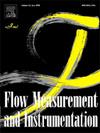基于 CFD 的 SAC 型超高压共轨喷射稳态喷嘴流场研究与结构优化
IF 2.3
3区 工程技术
Q2 ENGINEERING, MECHANICAL
引用次数: 0
摘要
本文利用 Fluent 的 CFD 计算工具构建并验证了超高压 SAC 型喷油器中燃料的流体模拟模型。研究了在 200 MPa 超高压工作条件下,不同喷嘴参数对超高压 SAC 型喷嘴流场特性的影响。从研究结果来看,随着喷嘴直径的增大,大口径喷嘴的流动性明显改善,延伸到出口的空化强度会更大,更有利于燃料的雾化。喷嘴角度越小,燃油流速越高,减小角度有利于提高燃油流速和质量流量。喷嘴进口倒半径增大,喷嘴流动特性显著增加,有利于提高喷嘴的环流性能,但不利于燃料的雾化。在喷嘴出口横截面积一定的情况下,提出了优化结构的双交叉椭圆形喷嘴形状,以减少喷嘴内的气蚀,提高喷嘴的环流性能。优化后的双交叉椭圆形喷嘴质量流量比原喷嘴提高了 16.99 g/s,喷嘴内的空化现象得到明显抑制,整体平均环流系数达到 0.9494,比原喷嘴提高了 70.23 %,优化后的双交叉椭圆形喷嘴的环流性能得到明显改善。本文章由计算机程序翻译,如有差异,请以英文原文为准。
CFD-based flow field study and structural optimization of SAC-type ultrahigh-pressure common rail injection steady-state nozzle
This paper constructs and validates a fluid simulation model of fuel in an ultra-high-pressure SAC-type injector using Fluent's CFD computing tool. The effects of different nozzle parameters on the flow field characteristics of ultrahigh-pressure SAC-type nozzles under ultrahigh-pressure 200 MPa operating conditions were investigated. In the context of the study, with the increase of the nozzle diameter, the flowability of the loud nozzle is significantly improved, and the cavitation intensity extended to the outlet will be greater, which is more conducive to the atomization of the fuel. The smaller the nozzle angle, the higher the fuel flow rate, and reducing the angle is favorable to increase the fuel flow rate and mass flow rate. The increase in the inverted radius of the nozzle inlet and the significant increase in the nozzle flow characteristics help improve the nozzle's Circulation performance but are not conducive to the atomization of the fuel. The optimized structure of a Double-crossed oval spray nozzle shape is proposed to reduce the cavitation in the spray nozzle and improve the Circulation performance of the nozzle under a certain cross-sectional area of the outlet of the spray nozzle. The optimized Double-crossed oval spray nozzle mass flow rate increased by16.99 g/s compared with the original nozzle, and the cavitation in the nozzle was significantly suppressed, and the overall average circulation coefficient reached 0.9494, which is 70.23 % higher than the original nozzle, and the Circulation performance of the optimized Double-crossed oval spray nozzle was significantly improved.
求助全文
通过发布文献求助,成功后即可免费获取论文全文。
去求助
来源期刊

Flow Measurement and Instrumentation
工程技术-工程:机械
CiteScore
4.30
自引率
13.60%
发文量
123
审稿时长
6 months
期刊介绍:
Flow Measurement and Instrumentation is dedicated to disseminating the latest research results on all aspects of flow measurement, in both closed conduits and open channels. The design of flow measurement systems involves a wide variety of multidisciplinary activities including modelling the flow sensor, the fluid flow and the sensor/fluid interactions through the use of computation techniques; the development of advanced transducer systems and their associated signal processing and the laboratory and field assessment of the overall system under ideal and disturbed conditions.
FMI is the essential forum for critical information exchange, and contributions are particularly encouraged in the following areas of interest:
Modelling: the application of mathematical and computational modelling to the interaction of fluid dynamics with flowmeters, including flowmeter behaviour, improved flowmeter design and installation problems. Application of CAD/CAE techniques to flowmeter modelling are eligible.
Design and development: the detailed design of the flowmeter head and/or signal processing aspects of novel flowmeters. Emphasis is given to papers identifying new sensor configurations, multisensor flow measurement systems, non-intrusive flow metering techniques and the application of microelectronic techniques in smart or intelligent systems.
Calibration techniques: including descriptions of new or existing calibration facilities and techniques, calibration data from different flowmeter types, and calibration intercomparison data from different laboratories.
Installation effect data: dealing with the effects of non-ideal flow conditions on flowmeters. Papers combining a theoretical understanding of flowmeter behaviour with experimental work are particularly welcome.
 求助内容:
求助内容: 应助结果提醒方式:
应助结果提醒方式:


